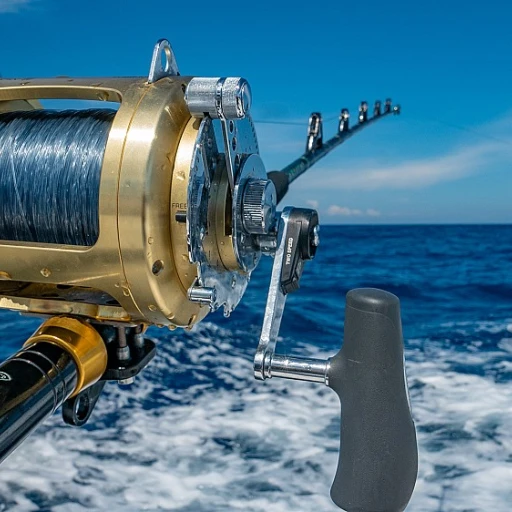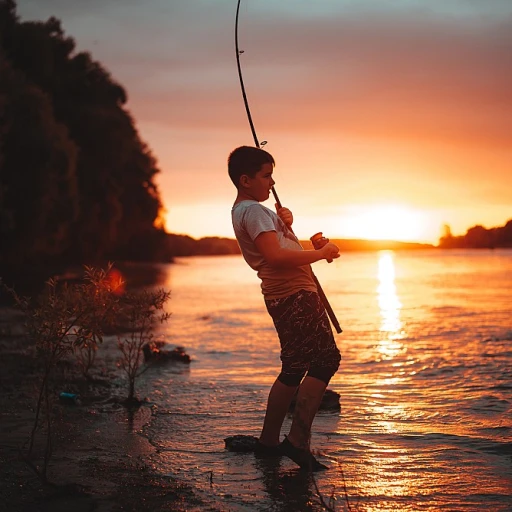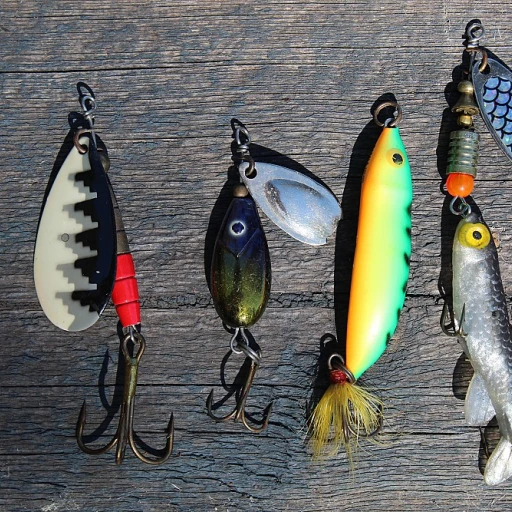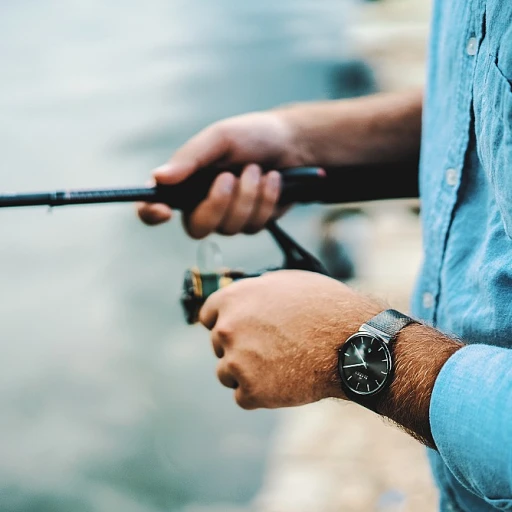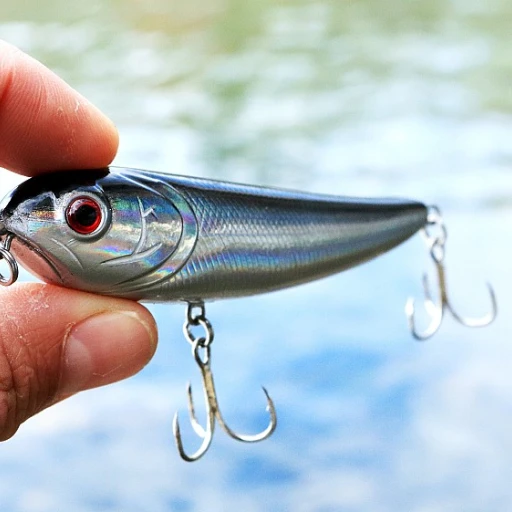
Understanding the importance of fishing knots
Why mastering fishing knots is crucial
Anyone who’s ever tried their hand at fishing knows that a strong knot can be the difference between landing a big one and watching it swim away. It all boils down to one simple fact: your fishing knot connects you to the fish. To put it bluntly, without reliable knots, you're just plain out of luck. Imagine spending hours trying to nab a fish, only to lose it because your knot didn’t hold up. That’s a heartbreaker!
The role of knots in fishing success
Think about it this way: approximately 50% of fishing line breaks are due to poor knot tying (source: Understanding fish vision). That’s right, half the time your line snaps, it could've been avoided with a better knot. This plays a big part in whether you go home with a prize catch or an empty cooler.
Enhancing your fishing game
It’s not just about keeping your line intact. Tying the right kind of knot can enhance bait presentation, making it more enticing for fish. A well-tied knot ensures your lure moves precisely as it should, increasing your chances of a bite. For instance, a uni knot is often recommended for its high efficiency in maintaining the line strength.
The variety of fishing knots
Whether it’s a simple overhand knot or a more complex blood knot, the variety of fishing knots serves different purposes. Each has its unique strengths, tailored to specific fishing styles and situations. For example, a palomar knot is favored for its robustness in heavy current situations, while an improved clinch knot is a go-to for securing hooks.
Types of fishing knots every angler should know
{ "result": "Essential fishing knots in your repertoire
Let's be real, knowing how to tie a bunch of different fishing knots can be game-changing. Every angler, no matter if they're just starting out or they've been fishing for years, should have a solid set of knots in their back pocket.
The clinch knot: a dependable go-to
The clinch knot, sometimes called the improved clinch knot, is a staple. Got a hook eye or a swivel? This knot's got your back. It's straightforward and provides a strong hold. Just thread the line through the hook eye, twist it around the main line a few times, pass the tag end back through the loop near the eye, and pull tight. Simple, right?
Palomar knot: reliability meets simplicity
The Palomar knot is super easy and crazy strong, making it a favorite among many anglers. Its strength comes from the doubled line. To tie it, double a section of the line and pass it through the eye of the hook. Tie an overhand knot with the doubled line, then loop it over the hook. Pull on the main line and the tag end to tighten. Done!
Uni knot: versatile and strong
The Uni knot is versatile. Whether you're joining lines or tying to a hook, this knot is your go-to. Tie a loop by wrapping the tag end around the doubled line a few times and pulling it tight. Then, pull on the standing line to slide the knot snug against the eye.
Surgeon's knot: your line-joining buddy
Got to join two lines? The surgeon's knot is your friend. It's quick and holds strong. Lay the two lines parallel, make an overhand knot with both lines, and pass the tag ends through the loop twice. Tighten, and you're good to go.
Understanding different knots and their applications can make your fishing experience so much better. Dive into these techniques, and you'll be ready for anything. And speaking of understanding, ever wondered how do fish get pregnant? Dive into that fascinating read next!
Step-by-step guide to tying the easiest fishing knot
Step-by-step instructions
Alright folks, let's dive right into it. When we talk about the easiest fishing knot, the Palomar knot usually comes to mind. It's a favorite for beginners and experienced anglers alike. Here’s a step-by-step guide to tie it with ease:
Step 1: Double the line
Start by folding around six inches of your line into a loop. Pass this loop through the eye hook of your lure or swivel. It’s crucial to ensure that both the tag end and the main line are even.
Step 2: Create a loose overhand knot
With the doubled line, tie a loose overhand knot ensuring the tag loop hangs away from the hook eye. Remember, keep the loop open, and don't pull it tight yet.
Step 3: Pass the loop over the hook
Take the loop you just formed and pass it over the eye and hook. By doing this, you essentially cover the hook entirely, setting the foundation for a tight and secure knot.
Step 4: Tighten the knot
Now, moisten the knot with a bit of water or saliva. Begin to pull on both ends of the line simultaneously until the knot slides down and cinches up against the hook eye. Make sure it's snug!
Step 5: Trim the tag end
Finally, trim the excess tag end, but make sure there's a small length left just in case. Cutting it too close might cause it to unravel, especially with larger fish.
To see a visual representation of the Palomar knot, you can refer to the image in the link.
The Palomar knot is appreciated due to its simplicity and strength. Perfect for monofilament and braided lines alike, it’s especially favored when you need a robust knot that won’t fail you out in the water. Don’t just take our word for it; many seasoned anglers, like renowned expert Steve Starling, have vouched for its reliability.
So, next time you head out to fish, remember that tying the right knot can make all the difference. Happy fishing!
Expert insights on choosing the right knot
Insights from top anglers on selecting the perfect knot
Choosing the right fishing knot isn't just a matter of following steps—it's about understanding why some knots work better in certain situations. We spoke with a few seasoned anglers to get their take on what makes a fishing knot the right choice.Fishing conditions and line types
One of the first things pros like Hank Parker and Bassmaster Classic champion Mike Iaconelli consider is the fishing line they're using. They point out that certain knots work better with different types of lines. For example, the improved clinch knot (perfect for monofilament) might not be ideal when you're using braided lines. Mike recommends the uni knot for braid because of its simplicity and strength.Target species and environment
Greg Hackney, another angling expert, emphasizes that the choice of knot can also depend on the species you're after and the environment you're fishing in. If you're going after big game fish in saltwater, you need a knot that offers a secure hold, like the Berkley braid knot. For freshwater fishing, the surgeon knot is a staple due to its ease of tying and strong performance.Strength and reliability
Jay Yelas, an FLW Tour champion, points out that knot strength is a crucial factor. A knot should be tested for its breaking strength, which is essential for understanding its reliability. According to a study by Field & Stream, various knots have been tested, and palomar knot has been lauded for retaining nearly 100% of the line's original strength.Expert's favorites list
To help narrow down your options, here's a quick list of favorite knots from the pros:- Uni knot: Excellent for utility and strength across various lines.
- Palomar knot: Preferred for its incredible holding power, even with braided lines.
- Clinch knot: A household name in fishing, especially effective for monofilament lines.
- Surgeon knot: Simple and super effective for joining lines of different diameters.
Practice and patience
All the experts agree on one thing: practice is key. The more you practice tying these knots, the more intuitive and reliable they become. Plus, practicing ensures you can tie knots quickly and efficiently under any conditions—whether it's windy weather or low light. By understanding the strengths and applications of each knot, you'll be better equipped to choose the right one for each fishing scenario, ensuring you have the strongest connection between you and the fish you're reeling in.Common mistakes in knot tying and how to avoid them
Common slip-ups in knot tying and how to dodge 'em
Fishing knots might seem straightforward, but even the pros can muck it up now and then. Here are some frequent blunders and how to sidestep 'em.
First off, many anglers rush through the knot tying process. This often leads to loose knots that can slip under tension. To avoid this, take your time and ensure each step is done thoroughly. Another issue is not moistening the knot before tightening. Friction generated during the tightening phase can weaken your line by as much as 50% (source: Science of Fishing Magazine). So, wet the knot with a bit of water or saliva to reduce friction.
Tying the knot incorrectly is a typical mistake. Whether you're using the improved clinch knot, uni knot, or the palomar knot, each has specific steps you must follow. Not paying attention to these steps can result in poorly tied knots that may fail. Detailed guides and diagrams can help, so pay close attention to each knot's unique features.
Not checking knots for strength is another rookie error. Always pull on your knot with considerable force to ensure it's secure. Better to break it onshore than lose the big one out on the water. Jeffrey Stein, a seasoned angler, puts it simply: "You can tell a good knot by its resilience under pressure."
Lastly, be aware of your line's condition. Old or frayed lines can't hold knots well and increase the risk of breakage. Regularly check your line and replace it as needed. Chris Anderson, renowned for his fishing tutorials, explains, "A robust fishing line paired with a well-tied knot is your best bet for landing that trophy fish."
In summary, by honing your technique, taking your time, and regularly checking both your knots and lines, you'll dodge most common mistakes and set yourself up for more successful catches.
Source: Science of Fishing Magazine, Jeffrey Stein - Professional Angler, Chris Anderson - Fishing Tutorial Expert
Case studies: Success stories from anglers
Real-world successes with fishing knots
When we hear stories about fishing adventures, one constant element stands out: the importance of fishing knots. Some of our readers have shared their own real-world success stories wrapped around the simplest yet most effective knots.
Mark Thompson, a professional angler, swears by the palomar knot for his bass fishing tournaments. He recalls how learning to tie this knot not only helped in securing hooks but also contributed to his multiple victories. Mark says, “The palomar knot's reliability gives me the confidence that my hook will hold strong during crucial moments.”
Another widely shared anecdote is from Sarah Jennings, a beginner turned experienced angler. She highlights the improved clinch knot as her go-to knot. Starting with just simple fishing trips, Sarah's love for the sport grew as she mastered knots. “Tying the improved clinch knot was a game-changer. It’s easy to remember, and it rarely fails,” Sarah shares.
Testimonies on knot efficiency
Bill Peterson, an old-timer who’s been fishing for decades, affirms the effectiveness of the blood knot for joining lines. This intricate knot has not only enabled him to land massive catches but also to win the respect of fellow anglers. "The blood knot might look complicated, but once you get the hang of it, it never disappoints,” Bill notes.
In the competitive arena, Julie Wright, a tournament champion, attributes her triumphs to the surgeon knot. Julie states, “When you face the intense pressure of competition, knowing your knot won't let you down is a relief. The surgeon knot, to me, represents the intersection of simplicity and strength.”
Overcoming knot-related challenges
It’s not all smooth sailing, though. Anglers often face challenges when tying knots in adverse conditions. David Brooks recalls a stormy day when winds were high, making it nearly impossible to tie a knot. “The strength of the wind was crazy! But knowing my improved clinch knot and palomar knot techniques well, I managed to secure my hook even in those conditions,” David reminisces.
These stories highlight the practical aspect of what we've discussed. When new to fishing, a solid understanding of knots is crucial. Each success story sprinkles a bit of wisdom and underlines the importance of these techniques. Remember, everyone starts somewhere, and with the right knots, you too can have your memorable fishing tales.
Advanced knot techniques for experienced anglers
Mastering the toughest fishing knots
For those who’ve mastered the basics and are looking to step up their game, diving into advanced knot techniques is the next logical step. Whether you’re dealing with monofilament, fluorocarbon, or even braid lines, having a few high-strength, reliable knots in your arsenal is crucial.
The Double Improved Clinch Knot
The Double Improved Clinch Knot is a variation of the standard improved clinch knot known for its extra security. It's perfect for those situations where you need extra strength and reliability:
- Double the Line: Pass the line through the hook eye twice before wrapping and looping.
- Added Grip: This variant adds more friction and reduces slip.
- Great for Braided Lines: Because braid can be slippery, doubling up can make a significant difference.
The Bimini Twist
Bimini Twist may sound complex, but it offers unparalleled knot strength and shock absorption, making it popular among big game fishermen. Here's why it stands out:
- 40-50 Twists: Wrap the line around itself 40-50 times!
- High-Test Lines: Ideal for lines over 20 lb test.
- Strength and Durability: Known for maintaining almost 100% line strength.
According to experts like Captain Pat Dineen, “the key to a successful Bimini Twist is patience and precision.” This knot is often a go-to for anglers targeting species like tuna and marlin.
Uni-to-Uni Knot
Uni-to-Uni Knot is paramount for joining two lines of similar or dissimilar diameters, often used when connecting a main line to a leader:
- Versatility: Works well with both monofilament and fluorocarbon lines.
- Ease of Tying: Not too complicated but extremely strong.
- Minimal Bulk: Maintains a slim profile, making it great for passing through guides.
Angler’s Insight: Renowned angler Chris Funk mentions, “the Uni-to-Uni Knot is my go-to for most fishing situations. It’s reliable, strong, and not overly complicated.”
Knot Failures to Watch Out For
Even the most proficient anglers can face knot failures. Here’s what to watch out for:
- Incorrect Looping: Missing loops can weaken the knot significantly.
- Poor Wetting: Not wetting the line before tightening can cause friction and burn damage.
- Rushed Tying: Precision takes time. Don’t rush—practice patience.
Remember, practice makes perfect. Repeatedly tying these knots in various conditions will fine-tune your skills and increase your confidence on your next fishing trip.
Resources and tools for perfecting your knot-tying skills
Essential tools to master your fishing knots
When it comes to tying fishing knots, having the right resources and tools can make all the difference. Whether you're a beginner or an experienced angler, these tools will help you perfect your knot-tying skills and ensure your knots are strong and reliable. Let's dive into some must-have tools and resources that will get you knotting like a pro.Knot-tying apps and online resources
In this digital age, there are countless apps and online platforms dedicated to teaching fishing knots. Apps like Knot Wars and ProKnot offer step-by-step tutorials with illustrations and videos to follow along. Online resources, such as animatedknots.com, provide detailed animations of each knot, making it easier to understand and replicate the steps. These tools are especially helpful for visual learners who need to see the process in action.Essential knot-tying tools
To make your knot-tying experience smooth, having the right tools is essential. Here’s a list of must-have items:- Knot-tying tool: A simple tool that helps you tie knots like the uni knot and clinch knot with ease and precision.
- Fishing pliers: These are crucial for adjusting loops, pulling tag ends, and securing knots tightly.
- Nail knot tool: This small yet mighty tool is perfect for tying the nail knot, which is commonly used for connecting lines and leaders.
- Line clippers: Sharp clippers are necessary to trim tag ends to ensure your knots are neat and not prone to snagging.
- Hook eye cleaner: This tool helps clear any debris from the hook eye, making it easier to pass the tag end through.

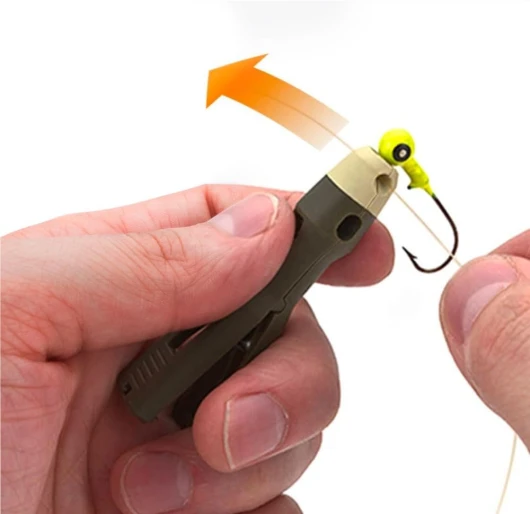
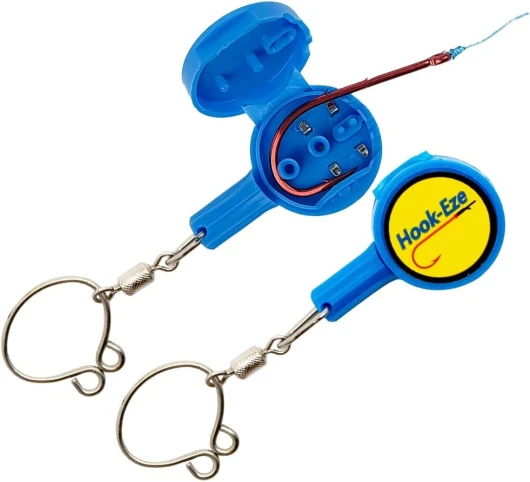
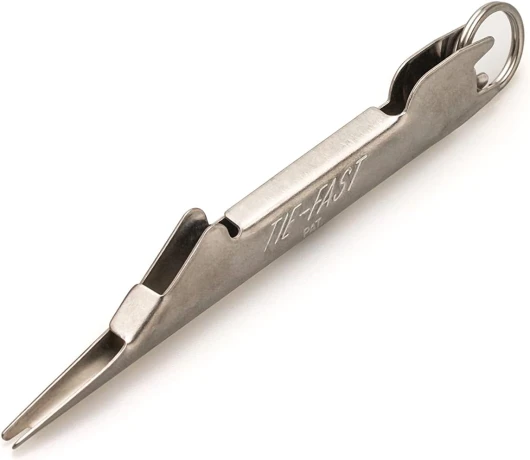
-large-full.webp)


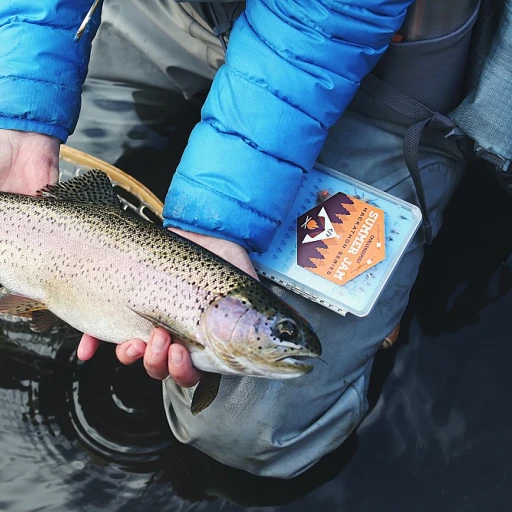
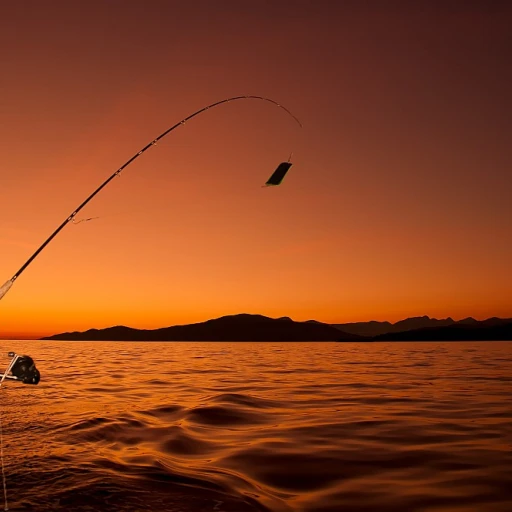
-large-teaser.webp)
-large-teaser.webp)
